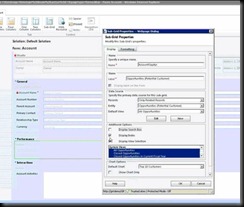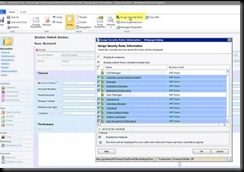Opportunities and benefits for developers in CRM 2011 (Part I/II)
There is a lot of buzz about Dynamics CRM these days. And the explanation for this buzz is simple: we are in front of a big release!. To be honest, better and bigger than I thought.
So, first of all, to be clear: Dynamics CRM 2011 is a BIG releaseJ.
Now, you may be wondering what to watch / follow / read in order to get tuned with it, let me make you some recommendations:
1. Watch this video from Eric Boocock (Sr. Technical Product Manager - Microsoft CRM).
There are many videos on the web up to day about Dynamics CRM 2011 but this is the best and more complete I have watched so far to get an overview.
I also extracted the pictures for this post from his video.
2. Follow #crm2011 #crm2011beta and @msdyncomm in twitter
3. Join Microsoft Dynamics CRM in facebook.
4. Read these What’s new FAQs.
· Online -> http://rc.crm.dynamics.com/rc/2011/en-us/online/5.0/whatsNewCRM5.aspx
· OnPrem -> http://rc.crm.dynamics.com/rc/2011/en-us/on-prem/5.0/whatsNewCRM5.aspx
Ok, maybe you followed the above or not, but if you are an enthusiastic developer/architect like me who mostly works on the xRM side you may be wondering: ‘which are the benefits for me in this new version?’ or ‘which are the new opportunities I have now at my fingertips with CRM 2011?’. This is what I am going to cover on the following paragraphs from my humble point of view.
So, let’s go over the new stuff that strictly matters to xRM developers:
[Updated development tools]
Microsoft Visual Studio 2010, .Net Framework 4.0, WCF native services, oData endpoint, LINQ support.
In other words, modern tools to work more productively.
[Custom code for Microsoft Dynamics CRM Online]
This important limitation that we face today in CRM 4 is no longer present on CRM 2011.
Now, at least the promise is that we are going to be able to develop custom code for the cloud (Windows Azure® obviously) that extends Dynamics CRM 2011. This can be possible thanks to a reengineering made to the platform to allow running code in sandboxes so as to avoid eventual problems on a multi-tenant environment.
The cloud itself I think will play an important role, not only an Azure web role but also AppFabric Service Bus to integrate with on premises line of business applications on client’s companies.
[Managed solutions]
I think all of us were clamming for this concept and now it’s real, our wishes come true.
The concept of ‘solution’ as a package that contains all of our customizations and resources that are themselves our deliverable, our product. It also supports versions, making it even more powerful and manageable.
Picture 1 - Managed solutions
Managed solutions can be created as well as imported. Moreover, they can only be modified by specific users, meaning code protection for our customizations.
So, as ISVs, now distributing our products mean packaging them into solutions and probably publishing those solutions through marketplace (see below). The solution will include customizations, workflows, assemblies, web resources (such as htmls, .js, .jpg, etc.), security roles, reports and any other staff needed to run our solution. All of this as a single package.
Packaging, code protection, easy distribution, easy install / uninstall, avoidance of potential conflicts with other third parties customizations are some of the advantages that we have now with the introduction of Managed solutions.
If you are interested in seeing how the solution file looks, this blog post from Gayan Perera digs into a little bit on it.
[Marketplace integration]
This means that the users will be able to search into an online catalog for third parties solutions in an integrated and natural fashion within inside the product.
Users will be able to try a solution, download, install, uninstall, purchase, meaning a paradigm change / shift on how we work, how we provide solutions and commercialize them.
In a word, this means revolution!.
This revolution will drive to a mind change, where the easier the solution, the easier the setup, the less customization needed the better the probability the trial experience successes and customers finally buy our solution. All of it without even visiting your site.
[New form designer and declarative capabilities]
There is bunch of new staff here that makes it possible for us to create rich forms within minutes, including cool new capabilities such as:
· Drag and drop experience, meaning that now we can design a form just by dragging fields into it and moving their position just by dragging and dropping.
Picture 2 - Drag and drop experience
· Create new relationships directly from the form in a few clicks,
· Subgrids (i.e. for displaying open cases of an account within the form), meaning no more iframes and javascript to set up urls to display grids with related entities records.
Picture 3 - Subgrids within forms
· Support for multiple forms by entity, using security roles which will define who will be able to work with which form. This is a tremendous and clamed for improvement!
Picture 4 - Security roles by form
· Fields-level security, another great great improvement, meaning no more javascript and obscure logic (or third parties solutions) to determine who can see what. This is not built-in for us.
(to be continued on next post..)
Pablo Peralta
MCBMSS Dynamics CRM



